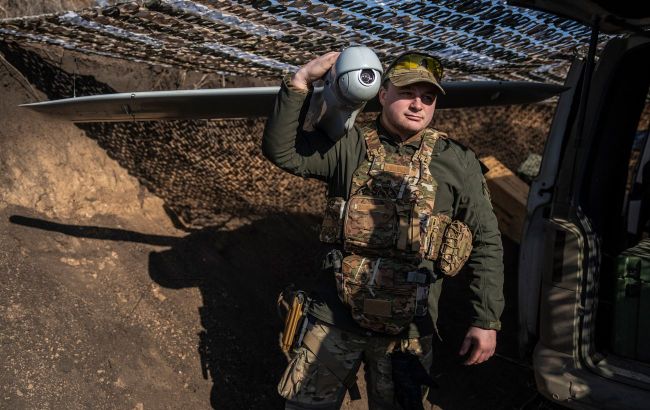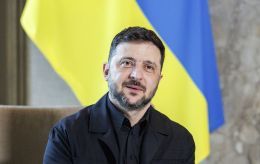How Kursk breakthrough changed situation on front: What experts say
 Photo: Events in Kursk region have not significantly affected the front in Donetsk region, where the enemy is applying pressure (Getty Images)
Photo: Events in Kursk region have not significantly affected the front in Donetsk region, where the enemy is applying pressure (Getty Images)
Ukrainian soldiers continue to hold back the Russian offensive in the east, with the Pokrovsk direction remaining one of the hottest spots where the Russian army is carrying out attacks. Meanwhile, fighting has been ongoing in the Kursk region for almost a week, drawing significant attention.
Has the Kursk Breakthrough changed the situation in eastern Ukraine, and what will influence Russia's future actions? RBC-Ukraine asked experts for their insights.
According to military expert Pavlo Narozhnyy, if we do not take into account the operation in the Kursk region, the situation on the front has not significantly changed, as the Russian army continues its pressure, especially in the Pokrovsk direction.
"Fighting also continues in the Kharkiv direction, so there haven't been any major changes. The occupiers are exerting the most pressure in the Donetsk region, which remains their main offensive direction. The enemy outnumbers us, with more personnel, equipment, and so on," Narozhnyy says.
He notes that the only relatively certain development is that the enemy has redeployed its 810th Marine Brigade from Crimea.
"But this brigade is already very worn out. It fought for a long time in the direction of Krynky, so it's hard to say that it has a lot of strong potential left. Overall, the situation hasn't changed much in the last few weeks," the expert believes.
He points out that the situation has shifted positively regarding the morale of Ukrainian soldiers, which has significantly improved.
"Over the past year, we have been engaged in difficult defensive battles and have hardly advanced anywhere. It is very important that we have been able to show significant success, advancing 30 kilometers behind enemy lines. This Kursk operation has only just begun. It might draw away Russian forces, but for now, the overall dynamics remain the same," Narozhnyy adds.
In turn, the head of the Сenter of Military Law Researches, Oleksandr Musiienko, believes that the events in the Kursk region will indeed affect the eastern front. At the very least, Russia will have to divert forces and reserves that it had fully planned to use in the Donetsk region.
"They will no longer be able to deploy them in such numbers there because the zone of active combat in the Kursk region is expanding. For instance, we hear from the governor of the Belgorod region that they are also evacuating the Krasnoyaruzhsky district. There are risks that something might happen there as well, so Russia is forced to redeploy certain troops," Musiienko points out.
The expert notes that there is some redeployment and withdrawal of Russian forces from the Pokrovsk direction, but so far, it is not significant. According to him, one of the overall objectives of the operation in the Kursk region is to divert enemy forces and create additional problems for them on various sections of the front, especially in areas where they did not expect it.
"I think this will increase as the fighting in the Kursk region continues and drags on. Therefore, undoubtedly, this will affect the situation on the eastern front in the medium to long term," Musiienko said.
He also commented on a Forbes article that suggests Ukrainian forces are allegedly digging trenches in the Kursk region, which is "a sign they plan to stay."
"This is one of the possible scenarios. If the task is to remain there for a long time, then it makes sense to dig in and establish defensive lines. This is necessary to protect themselves and their positions. It creates problems for Russia because, in this case, Putin will be forced to act and redeploy his troops. This is a form of pressure on Russia, both militarily and politically," Musiienko concluded.
What is known about the Breakthrough in the Kursk region
Fighting in Russia's Kursk region has been ongoing for seven days. During this time, numerous videos of destroyed enemy equipment and captured Russian soldiers have circulated online. According to Russian media, the total area where hostilities are occurring has expanded to 720 square kilometers. Russian media outlets are widely reporting that the town of Sudzha is "under the control of the Ukrainian Armed Forces," and the Institute for the Study of War (ISW) notes that Ukrainian forces appear to be present in areas up to 35 kilometers from the international border with the Sumy region.
Meanwhile, local authorities admit that the Russian army no longer controls 28 settlements, and Ukrainian forces have reportedly advanced 12 kilometers deep and 40 kilometers wide into the Kursk region. Currently, a counterterrorism operation regime is in effect in Russia's Bryansk, Kursk, and Belgorod regions.
However, Ukraine's military-political leadership has not confirmed involvement in the operation. Yesterday, President Volodymyr Zelenskyy stated that Ukrainian servicemen are now pushing the war onto the aggressor's territory to restore justice.
For more details on where the fighting in the Kursk region is taking place, read a separate report by RBC-Ukraine.
Sources: exclusive comments from the head of the Сenter of Military Law Researches, Oleksandr Musiienko, and military expert Pavlo Narozhnyy.

